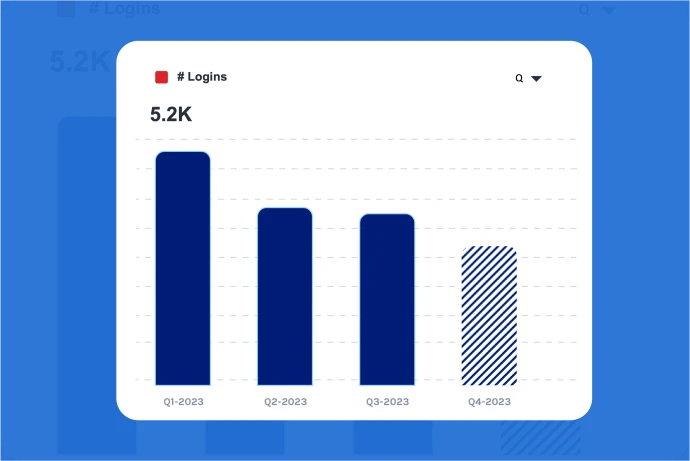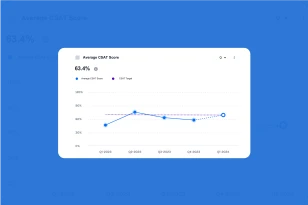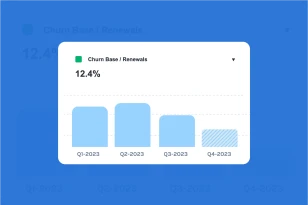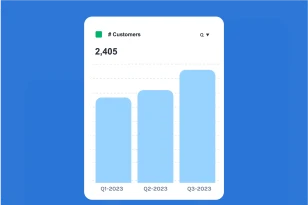What is Usage by Customer?
Usage by Customer is a metric that measures the level and frequency of a customer’s interaction or engagement with a product, service, or platform. This metric is particularly relevant in industries where customer behavior and product usage patterns are key indicators of satisfaction, value realization, and potential for upselling.
Actual methodology used to gaugue customer usage will vary by company and can include # logins, # users, #clicks, time spent in platform per day, etc. Keep scrolling for more details on how to measure customer usage.
Why is it Important to Measure Usage by Customer?
Measuring Usage by Customer is important for several reasons:
- Product Adoption: Usage metrics provide insights into how effectively customers have adopted and integrated a product into their workflows. High usage levels suggest strong product adoption and value realization.
- Customer Engagement: Tracking usage by customer helps assess the level of ongoing engagement. Higher engagement is often associated with increased customer satisfaction and loyalty.
- Value Realization: Usage metrics indicate whether customers are successfully realizing the value promised by the product or service. It helps businesses understand the impact of their offerings on customer outcomes.
- Upselling Opportunities: Monitoring usage patterns allows businesses to identify opportunities for upselling or cross-selling. Customers who actively use a product may be receptive to additional features or upgrades.
- Churn Prediction: A decline in usage can serve as an early warning sign of potential churn. Analyzing usage data helps identify at-risk customers and allows for proactive retention efforts.
How Do you Measure Usage by Customer?
The measurement of Usage by Customer involves tracking and analyzing various aspects of customer interactions with a product or service. Specific metrics may include:
- Frequency of Use: How often does a customer use the product or service within a specific timeframe? This could be daily, weekly, monthly, etc.
- Duration of Use: How much time does a customer spend actively using the product during each session or over a defined period?
- Feature Adoption: Which features or functionalities within the product are customers using? Tracking feature adoption provides insights into the perceived value of specific elements.
- User Engagement Metrics: Metrics such as clicks, views, interactions, or any other relevant actions within the product can indicate user engagement.
- Product-Specific Metrics: Depending on the nature of the product, usage metrics may include specific indicators like the number of documents created, transactions processed, tasks completed, etc.
- User Paths and Journeys: Analyzing the paths and journeys users take within the product can reveal patterns and preferences.
- Customer Segmentation: Segmenting customers based on usage patterns allows businesses to tailor communication, support, and marketing efforts to different customer segments.
- Event Tracking: Use event tracking tools or analytics platforms to monitor specific events or actions within the product and attribute them to individual customers.
How To Improve Usage by Customer?
Improving Usage by Customer involves strategies to enhance product adoption, increase engagement, and deliver ongoing value. Here are key approaches:
- Onboarding Optimization: Ensure a seamless and effective onboarding process to help customers quickly understand and start using the product. Provide tutorials, walkthroughs, and support resources.
- Customer Education: Offer educational resources, documentation, and training materials to help customers fully leverage the features and functionalities of the product.
- Feature Communication: Actively communicate new features, updates, and enhancements to customers. Highlight the value these changes bring to encourage exploration and usage.
- Personalized Recommendations: Use data-driven insights to provide personalized recommendations for features or actions that align with each customer’s needs and preferences.
- Proactive Support: Proactively address customer issues and provide support to ensure smooth usage. Resolve challenges promptly to prevent frustration and potential disengagement.
- In-App Messaging: Utilize in-app messaging to communicate with users while they are actively using the product. Deliver relevant information, tips, or announcements directly within the user interface.
- Feedback Collection: Gather feedback from users to understand their experience and identify areas for improvement. Act on feedback to enhance the user experience and address pain points.
- Gamification: Introduce gamification elements within the product to make usage more engaging. Rewards, badges, or other incentives can motivate users to explore and interact more.
- Customer Success Programs: Implement customer success programs to proactively engage with customers, understand their goals, and help them achieve success with the product.
- Regular Updates: Continuously improve and update the product based on customer needs and industry trends. Regular updates demonstrate commitment to providing value and keeping the product relevant.
- Performance Monitoring: Monitor the performance of the product to ensure that it operates smoothly and efficiently. Technical issues or slow performance can impact user satisfaction.
By implementing these strategies, businesses can work towards improving Usage by Customer, leading to higher product adoption, increased customer engagement, and enhanced overall satisfaction. Regular monitoring, analysis, and adaptation based on usage data contribute to sustained improvements over time.





